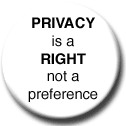Bank, Customers Spar Over Phishing Losses
Via Netcraft.
Who should bear the cost of phishing losses: the bank or the customer? That question is at the heart of a recent dispute between the Bank of Ireland and a group of customers that fell victim to a phising scam that drained 160,000 Euros ($202,000) from their accounts. The bank initially refused to cover the losses, but has since changed its mind and credited the accounts of nine victims, who had threatened to sue to recover their funds.
The Bank of Ireland incident is one of the first public cases of a bank seeking to force phishing victims to accept financial responsibility for their losses, but it likely won't be the last. Phishing scams continue to profilerate, as Netcraft has blocked more than 100,000 URLs already in 2006, up from 41,000 in all of 2005. Financial institutions continue to cover most customer losses from unauthorized withdrawals. But after several years of intensive customer education efforts, the details of phishing cases are coming under closer scrutiny, and the effectiveness of anti-phishing efforts taken by both the customer and the bank are likely to become an issue in a larger number of cases.
The issue of responsibility has been most prominent in the UK. In late 2004, the UK trade association for banks, known as APACs, began warning that financial institutions may stop covering losses from customers who have ignored safety warnings. That stance is reflected in the group's statement on customer protection.
More
here.








0 Comments:
Post a Comment
<< Home